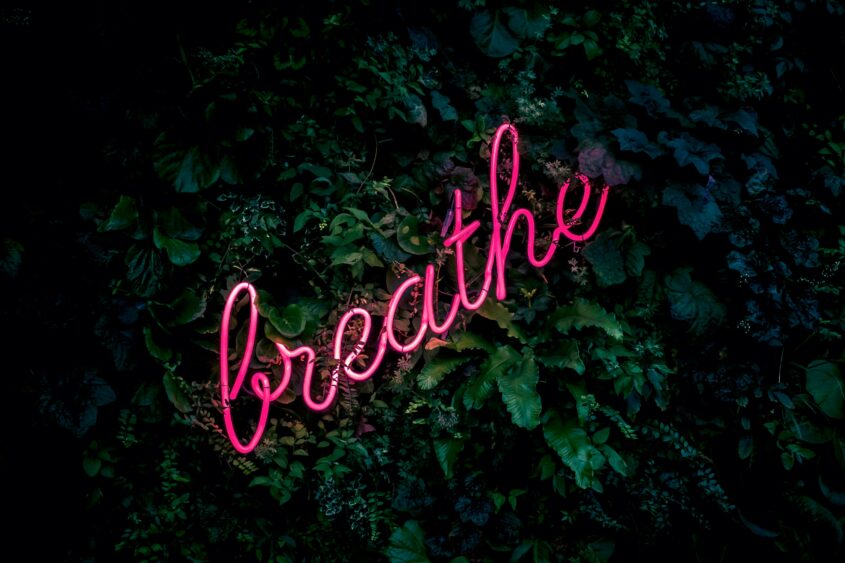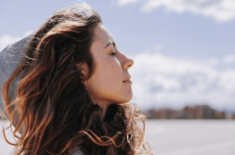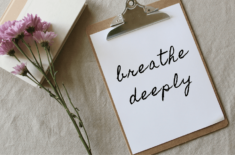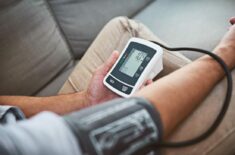Yoga teachings state that if the mind is moving so are the heart and respiration.
When we are angry, our breath quickens; when we sleep our breath slows down.
By consciously slowing down the breath and making it rhythmic so that consciousness is not disturbed by it, we can achieve a corresponding tranquility.
– Dr. Hiroshi Motoyama, psychologist, philosopher, & researcher
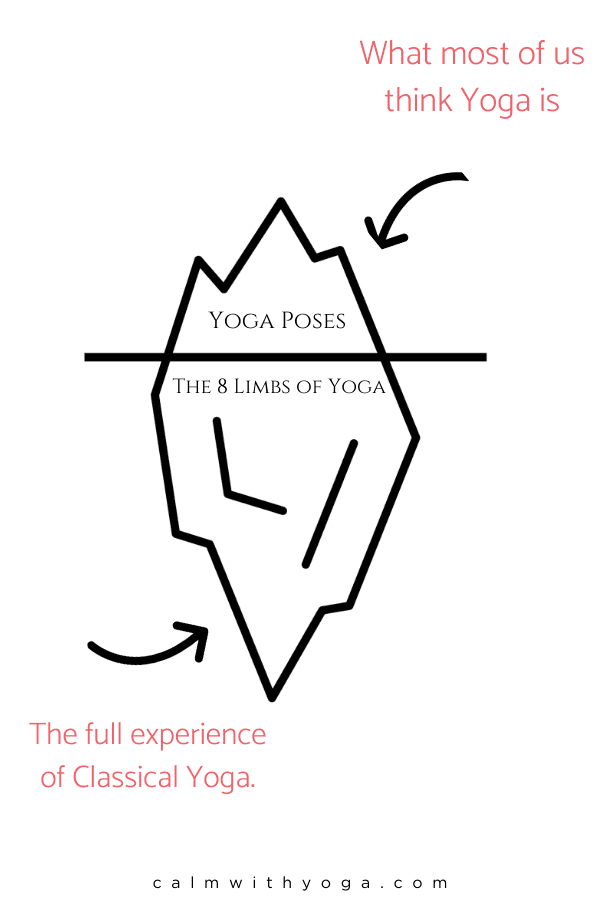
For thousands of years, Eastern cultures have regarded the breath as a powerful force for healing, well-being, and attaining states of higher awareness.
You may equate the practice of yoga with yoga poses performed on a mat, but that is just the tip of the iceberg.
The full experience of yoga in its entirety is more of a lifestyle than a workout.
A big part of this yogic path involves Pranayama practice.
The Sanskrit word ‘pranayama translates to ‘regulation of life force energy’ (prana).
It involves a series of deep breathing exercises and other techniques that aim to control inhalations and exhalations, and sometimes include breath retention (kumbhaka).

There are different types of pranayama exercises.
Some are meant to calm the nervous system down while some are meant to energize the nervous system.
The regular practice of pranayama offers a multitude of physical, emotional, and mental health benefits.
Here are 10 scientifically-proven benefits of taking up a regular pranayama practice:
1 – Helps improve hypertension:
Studies show that certain pranayama techniques can help relieve hypertension symptoms by normalizing heart rate and high blood pressure. (1)
2 – Helps improve digestive system function:
When you pair pranayama with belly breathing you activate the diaphragm – the dome-shaped muscle that sits under your lungs and above your digestive and internal organs.
The act of breathing in this way causes the diaphragm to rise and fall and this movement creates a gentle massage for the organs.
3 – Boosts the immune system:
This same diaphragmatic movement also helps to stimulate the movement of lymph – fluid containing white blood cells.
Preliminary studies also show that adding breath retention to your practice can also improve immune function.
4 – Can aid with healthy eating habits and weight loss:
Did you know that pranayama done consistently and done right can help keep cravings at bay?
Pranayama is an excellent addition to your healthy habits repertoire if you’re wanting simple hacks for weight management.
5 – Strengthens the respiratory system:
Pranayama can improve lung health and capacity because you’re using more of your lungs and you’re actually giving them a workout every time you practice. (2)
It’s also been shown to have beneficial effects on asthma and COPD (chronic destructive pulmonary disease) patients. (3)
6 – Increases GABA aka ‘nature’s chill-pill:
One study found that after just 1 yoga practice session subjects had an increase in a neurotransmitter called GABA, which has often been called “nature’s Xanax” because it helps to relax us and unwind us, especially when we’re most anxious.
After a single yoga asana session, which consists of postures, prāṇāyāma, meditation, and chanting, subjects experienced a 27% increase in GABA levels. (4)
7 – Helps relieve symptoms of chronic stress and mood imbalances:
Studies show that specific pranayama techniques such as Ujjayi breathing can reduce symptoms of stress, anxiety, and depression. (5)
8 – Can improve PTSD (post-traumatic stress disorder) symptoms:
A study that tested the effects of prāṇāyāma for post-traumatic stress disorder and depression in survivors of the 2004 South-East Asia Tsunami found that the results were significant, concluding that “yoga breath-based interventions may help relieve psychological distress following mass disasters.” (6)
9 – Can help improve sleep quality and reduce insomnia:
Slow, deep pranayama exercises have been shown to improve sleep quality and reduce insomnia when practiced regularly and consistently before bed and throughout the day. (15)
Pranayama is an excellent addition to a sleep meditation (yoga nidra) practice.
10 – Improves parasympathetic nervous system function, calms the fight or flight response, & reduces stress hormones:
Slow breathing pranayama cycles appear to stimulate the Vagus nerve, one of the most important nerves involved in the relaxation response.
Increased relaxation response leads to increased inner calm and the release of hormones that can counter the negative effects of stress hormones. (7)
Different Types of Pranayama Techniques:

1 – Alternate Nostril Breathing (Nadi Shodhana)
This is the same technique used by Hillary Clinton to manage the stresses of campaigning.
It involves the alternation of the right nostril and left nostril.
Studies show that alternate nostril offers many unique benefits if practiced regularly.
2 – Ujjayi
This type of pranayama is also called Victorious Breath, Hissing Breath, or Ocean’s Breath because you gently constrict the back of the throat to make the sound of ocean waves.
Ujjayi is an excellent choice for calming the mind and body down.
It’s very simple to do and be done virtually anywhere and anytime.
3 – Kapalbhati pranayama (Skull shining breath)
This breath is also known as “bellows breathing” because as you inhale and exhale your lower belly acts like a bellow contracting and expanding towards the spine.
Contraindications for this pranayama are high or low blood pressure, heart conditions, ulcers, epilepsy, detached retina, pregnancy, glaucoma, history of stroke, or recent c-section or abdominal surgery.
4- Bhramari pranayama (Humming bee breath)
This exercise involves using the fingers to block the ears only or also the eyes.
On the exhalation, you making a humming sound like a bee and become mindful of the subtle vibrational effects of the humming.
It’s best practiced sitting upright.
Contraindications are for pregnant women, those with high blood pressure, epilepsy, chest pain, or an active ear infection.
Final note:
It’s better to practice pranayama on an empty stomach.
For added prana (vital energy) bonus points try practicing outdoors to get even more fresh air into your beautiful lungs. 🙂
REFERENCES
:
(1) https://www.ncbi.nlm.nih.gov/pubmed/22398346
(2) https://www.researchgate.net/profile/Subbalakshmi_Nk/publication/242738302_Immediate_effect_of_nadishodhana_pranayama_on_some_selected_parameters_of_cardiovascular_pulmonary_and_higher_functions_of_brain/links/0046353a3aa697d5e7000000.pdf
(3) https://link.springer.com/article/10.1023/B:APBI.0000017861.60439.95
(4) https://www.researchgate.net/publication/6302660_Yoga_Asana_sessions_increase_brain_GABA_levels_A_pilot_study
(5) https://www.researchgate.net/profile/Ravinder_Jerath2/publication/274965480_Self-Regulation_of_Breathing_as_a_Primary_Treatment_for_Anxiety/links/55355f550cf20ea35f10d73c.pdf
(6) https://www.researchgate.net/publication/26755173_Effects_of_a_yoga_breath_intervention_alone_and_in_combination_with_an_exposure_therapy_for_post-traumatic_stress_disorder_and_depression_in_survivors_of_the_2004_South-East_Asia_tsunami
(7) https://www.ncbi.nlm.nih.gov/pubmed/15750381


